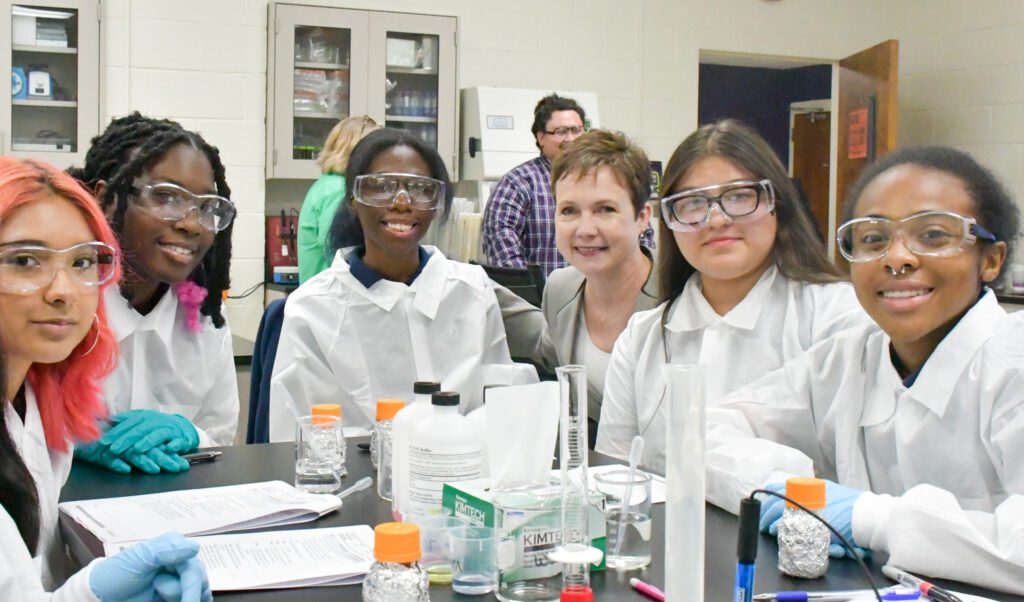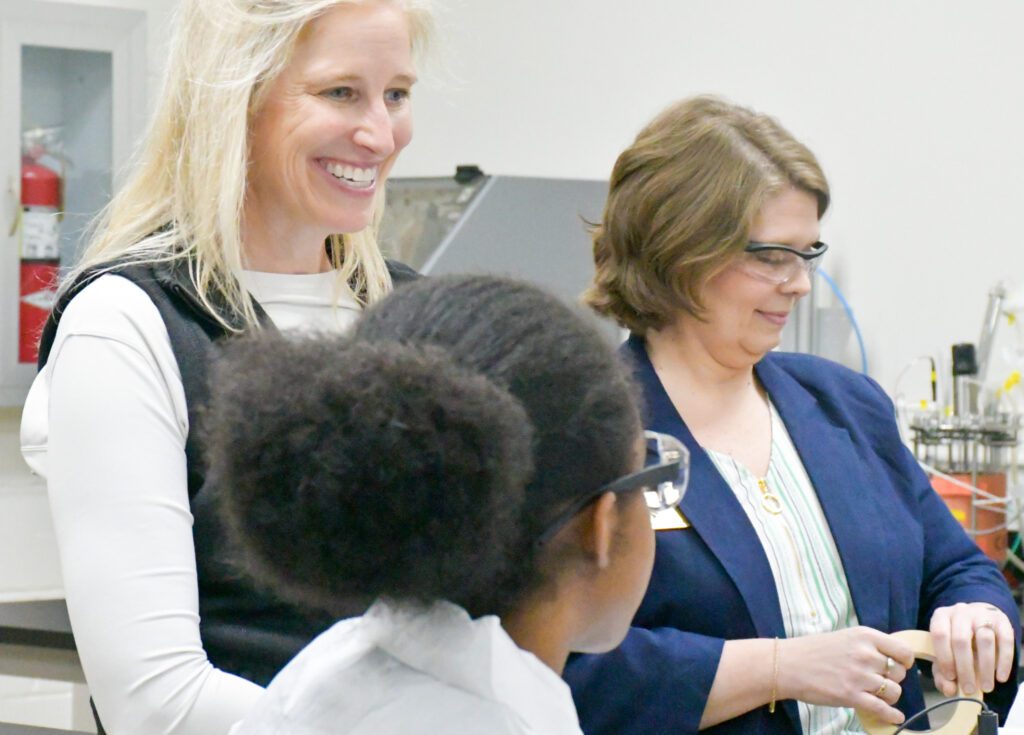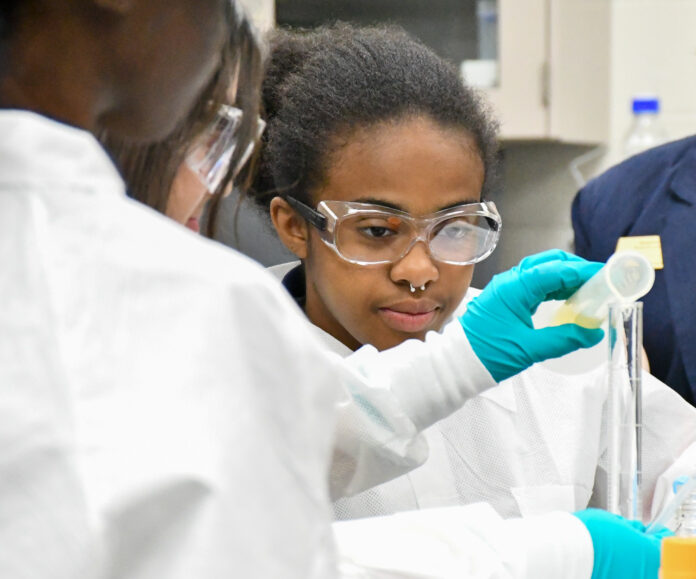They’re connectors — that’s how Wilson Community College President Dr. Jami Woods describes the people of Wilson County. Whether it’s connecting people or connecting ideas, the community’s spirit is one that is rooted in relationships and creating opportunities for residents.
Wilson County is nestled in the coastal plain region of North Carolina, about 40 miles west of Raleigh. The county is known for its agriculture production, barbecue, and being a results-driven community, according to Woods.
“It’s not just a talking community,” Woods said.
People in Wilson want to get to know you, she said, and then they want to figure out how your missions can converge to exponentially reach outcomes together you wouldn’t have obtained by yourself.
Woods, who has been president of Wilson Community College for nearly two years, is actively involved in county-wide partnerships like Wilson Forward — a collaborative group that partners with organizations across all sectors “to improve educational opportunities, health and wellness, and workforce development in Wilson.”
Woods said she is fortunate to work with an established group that is a conduit for critical partners connecting on the areas that align with their missions. The collaboration can make things happen in terms of supporting scholarships, curriculum development, and establishing workforce partnerships, she said.
“And no one is worried about who gets the credit,” Woods said.
Instead, she said, everyone is focused on the “end game,” and making connections that will better serve the community.
Adopting a one college model
Being connectors permeates throughout Wilson Community College too.
Woods said she is focused on two main areas: students and the workforce. Part of making those connections for students is operationalizing the college in a way that works best for students.
Before Woods joined Wilson, she said the college had discussed adopting a one college model, but it never came to fruition.
The one college model includes various components, but at its most basic level, the model is about efficiency and putting students at the center by streamlining processes and eliminating confusion with regards to different educational pathways.

Community colleges operate in a somewhat fractured manner when it comes to different pathways, specifically between curriculum and continuing education courses. Curriculum programs are educational pathways that lead to a degree or credential, while continuing education courses are designed for upskilling and personal enrichment and do not typically lead to college credits. However, there are some instances where continuing education courses contribute to degree completion.
In many cases, these two pathways are housed in different areas on community college campuses and often have different processes, procedures, outreach, and student engagement.
Curriculum and continuing education are mostly higher ed lingo and have more to do with the institution’s complexities than the student’s success.
Woods said navigating a confusing system and encountering jargon can create more anxiety for students who already question whether they belong in higher education.
That’s where the one college model comes in, centering around students and their success. While implementation looks different across colleges, the goal is to bring both pathways under one umbrella. That can look like moving all admissions and student registration, whether curriculum or continuing education, to one central location. It can also mean the unification of academic and student services, career centers, and financial services.
Some colleges adopting the one college model aim to unify academic and continuing education faculty and programs under one organizational structure. This is an effort to streamline processes and encourage faculty collaboration across programs based on content.
But the implementation takes time and requires collaboration, college-wide support, and cross-training across areas.
“I always say, let’s think about what’s best for the student,” Woods said.
Starting with the end in mind
“Start with the end in mind,” is a framework that Wilson’s Biotechnology Program Coordinator Stephanie Winstead uses as the foundation for her classes. It’s also become a compass statement for the college.
The philosophy, “start with the end in mind,” is a way of building course material that focuses on students seamlessly transferring from the classroom into careers without having significant gaps in industry knowledge or training.
Winstead hasn’t always been a faculty member. Before joining the college, Winstead was busy managing the training of biotechnology workers at a nearby pharmaceutical company. Winstead now takes the same industry standards and imparts knowledge, only this time it’s in the classroom.
She uses a similar approach to teaching as she did when she managed training at the company, starting with the foundations and building upon them. Winstead balances instruction with hands-on-learning and uses the same equipment that students will encounter while on the job.

“It’s what they’ll learn in the pharmaceutical industry,” Winstead said. “So structuring it in the same manner will help them complete training effectively when they begin their career.”
Another core element of Winstead’s classes is the mix of adult learners and high school students. Students aren’t just learning from her, she said, but they’re also learning from each other. Intergenerational learning is something that’s unique to many community college classes.
“It happens with them sharing with each other and learning from each other and working together as a team to work toward a common goal,” Winstead said.


To keep up-to-date with industry needs and standards, Winstead regularly connects with employers in the area. She also works closely with other biotechnology program coordinators across the state.
The N.C. Biotechnology Alignment Project is a recent project that focuses on aligning and standardizing biotechnology programs across the state’s community colleges. The group meets once a month to discuss industry standards and how to engage in the state’s various biotechnology initiatives.
“We all work together,” Winstead said. “It’s not good to be in a silo.”
The collaborative effort is particularly important given the recent growth North Carolina has seen in biotechnology. The life sciences industry in North Carolina exceeds 100,000 jobs and outpaces national industry growth.
In March 2025, pharmaceutical company Johnson & Johnson broke ground on its new location in Wilson County. The company’s new facility is set to create more than 400 jobs in the community. Salaries will vary by position, with the average annual wage being $108,823 — double the average salary in Wilson County.
The over $2 billion state-of-the-art biologics facility will add more than 5,000 manufacturing and construction jobs in North Carolina while being constructed, according to Johnson & Johnson. During the first 10 years of operation, the company projects the investment will create an estimated economic impact of $3 billion statewide.
Wilson Community College is set to open a new biotechnology workforce training center in June 2026. The 2023 state budget allocated $30 million in nonrecurring funds to build the BEST center, which will be located adjacent to the college’s campus. In October 2024, the Golden LEAF Board awarded the college $13 million to fund state-of-the-art training equipment.
“The BEST Center is the future,” Woods said. “I feel like it will continue to transform working opportunities in Wilson County and attract similar companies.”
Looking ahead
As she continues to look toward the future, Woods said she is always mindful of the team effort of those at the college.
“It’s something I’ll lift up all day, every day,” Woods said. “I’ve been blessed to be guiding and supporting these accomplishments in concert with this great team.”
Woods pointed to the college’s increased enrollment and the growth they’ve seen across the board.
“It has been hard and people are tired,” Woods said. “But everybody here is unified around serving students.”
Woods is coming up on two years of service at Wilson Community College. As she reflects back, Woods said she is reminded how vital the college is to the Wilson community. She is grateful to have landed in a place that cares for people, she said, where relationships matter and creating opportunities for people is important.
“I love Wilson,” Woods said. “I didn’t know how it would work out, but I felt like when I stepped foot on campus, it was right.”





